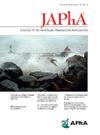农村卫生系统管理者对药师在协同药物治疗管理中的作用的看法。
IF 2.5
4区 医学
Q3 PHARMACOLOGY & PHARMACY
Journal of the American Pharmacists Association
Pub Date : 2025-09-23
DOI:10.1016/j.japh.2025.102929
引用次数: 0
摘要
背景:协同药物治疗修改(CDTM)授权在格鲁吉亚医生监督下,在规定的方案内调整剂量、剂量表和/或药物。药剂师主导的协同药物治疗管理积极影响健康结果,导致减少医疗保健支出。只有不到1%的乔治亚州药剂师拥有CDTM执照。目的:目的是获得农村初级卫生保健系统管理人员的反馈,以协助增加CDTM服务并扩大格鲁吉亚患者护理服务的可及性。方法:采用探索性质的访谈研究设计。使用完整的目标人群抽样来增加数据饱和的可能性。2023年1月,对7名卫生系统管理员进行了采访,内容涉及药剂师和药剂师主导的CDTM的知识,以及实施药剂师主导的CDTM的好处和障碍。采访的回答被记录下来。利用不断比较的两循环归纳编码过程被用来识别经分析三角测量验证的主题。结果:发现管理人员对CDTM下药师知识、技能和能力的理解不一致。药剂师主导的CDTM的好处包括:(1)改善患者护理,(2)增加基于价值的指标,(3)加强医师与药剂师的合作。扩大药剂师服务的障碍包括(1)医生的接受程度,(2)药剂师的知识和舒适度,以及(3)收入损失。管理人员认为,提高管理人员和提供者对药剂师能力的认识,并提供从类似服务中获益的证据,是鼓励参与CDTM的潜在途径。结论:卫生系统管理者是药师主导CDTM成功实施的关键利益相关者之一,但对药师主导CDTM下药师的知识、技能和能力的理解可能有限。提高他们的知识和理解,以及确定和解决他们认为的实施CDTM的好处和障碍,可能有助于扩大药剂师主导的CDTM服务,特别是在格鲁吉亚。本文章由计算机程序翻译,如有差异,请以英文原文为准。
Rural health system administrator perspectives on pharmacists' role in collaborative drug therapy management
Background
Collaborative drug therapy modification (CDTM) authorizes adjustment of dosages, dosage schedules, and/or medications within a defined protocol under physician supervision within Georgia. Pharmacist-led collaborative drug therapy management positively impacts health outcomes leading to reduced health care expenditures. Less than 1% of Georgia pharmacists have a CDTM license.
Objective
The objective was to obtain feedback from rural primary health care system administrators to assist in increasing CDTM services and expand access to patient care services in Georgia.
Methods
An exploratory qualitative interview research design was utilized. Complete target population sampling was used to increase likelihood of data saturation. In January 2023, 7 health system administrators were interviewed regarding knowledge of pharmacists and pharmacist-led CDTM, as well as perceived benefits of and barriers to implementation of pharmacist-led CDTM. Interview responses were transcribed. A two-cycle inductive coding process utilizing constant comparison was employed to identify themes verified by analyst triangulation.
Results
Inconsistent understanding of pharmacist knowledge, skills, and abilities under CDTM by administrators was identified. Perceived benefits of pharmacist-led CDTM included (1) improved patient care, (2) increased value-based metrics, and (3) enhanced physician-pharmacist collaborations. Perceived barriers to the expansion of pharmacist services included concerns regarding (1) physician acceptance, (2) pharmacist knowledge and comfort, and (3) loss of revenue. Improving administrator and provider awareness of pharmacist abilities and providing evidence of benefit from similar services were identified by administrators as potential ways to encourage CDTM participation.
Conclusion
Health-system administrators are one of the key stakeholders in successful pharmacist-led CDTM implementation, but may have limited understanding of pharmacist knowledge, skills, and abilities under pharmacist-led CDTM. Improving their knowledge and understanding, as well as identifying and addressing their perceived benefits and barriers to implementing CDTM, may facilitate the expansion of pharmacist-led CDTM services, particularly in Georgia.
求助全文
通过发布文献求助,成功后即可免费获取论文全文。
去求助
来源期刊
CiteScore
3.30
自引率
14.30%
发文量
336
审稿时长
46 days
期刊介绍:
The Journal of the American Pharmacists Association is the official peer-reviewed journal of the American Pharmacists Association (APhA), providing information on pharmaceutical care, drug therapy, diseases and other health issues, trends in pharmacy practice and therapeutics, informed opinion, and original research. JAPhA publishes original research, reviews, experiences, and opinion articles that link science to contemporary pharmacy practice to improve patient care.

 求助内容:
求助内容: 应助结果提醒方式:
应助结果提醒方式:


